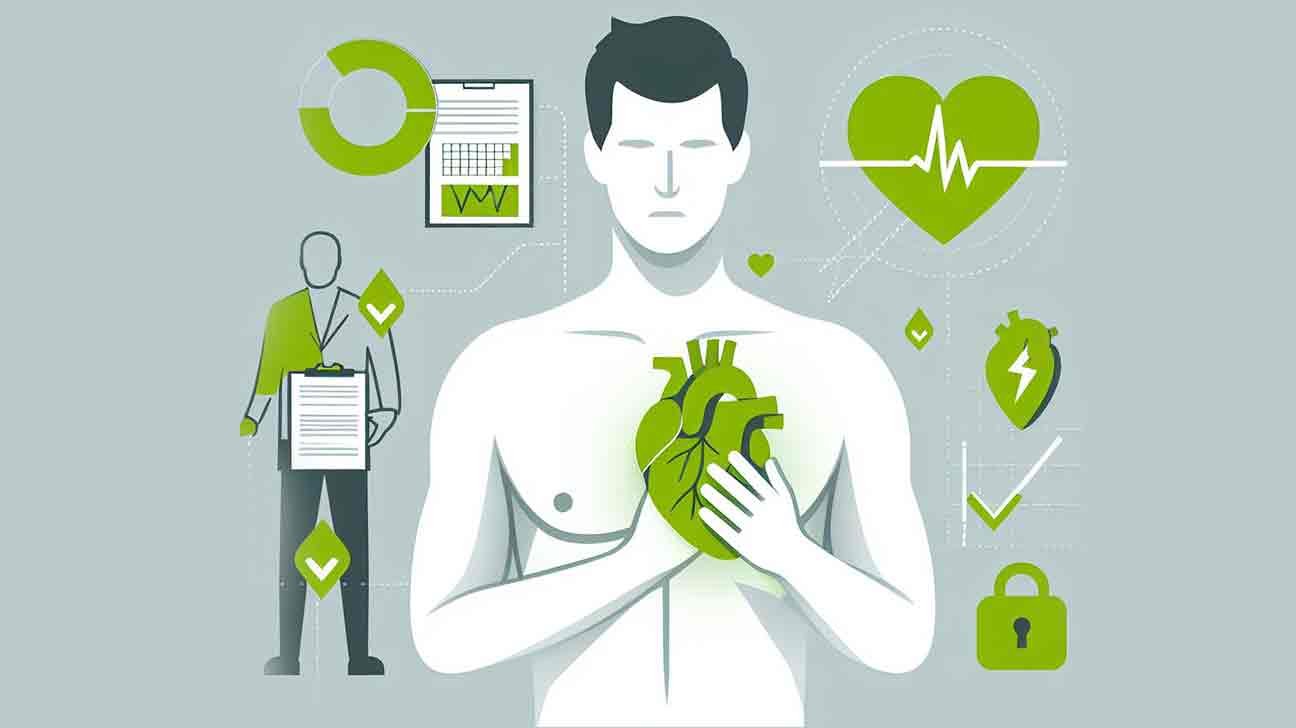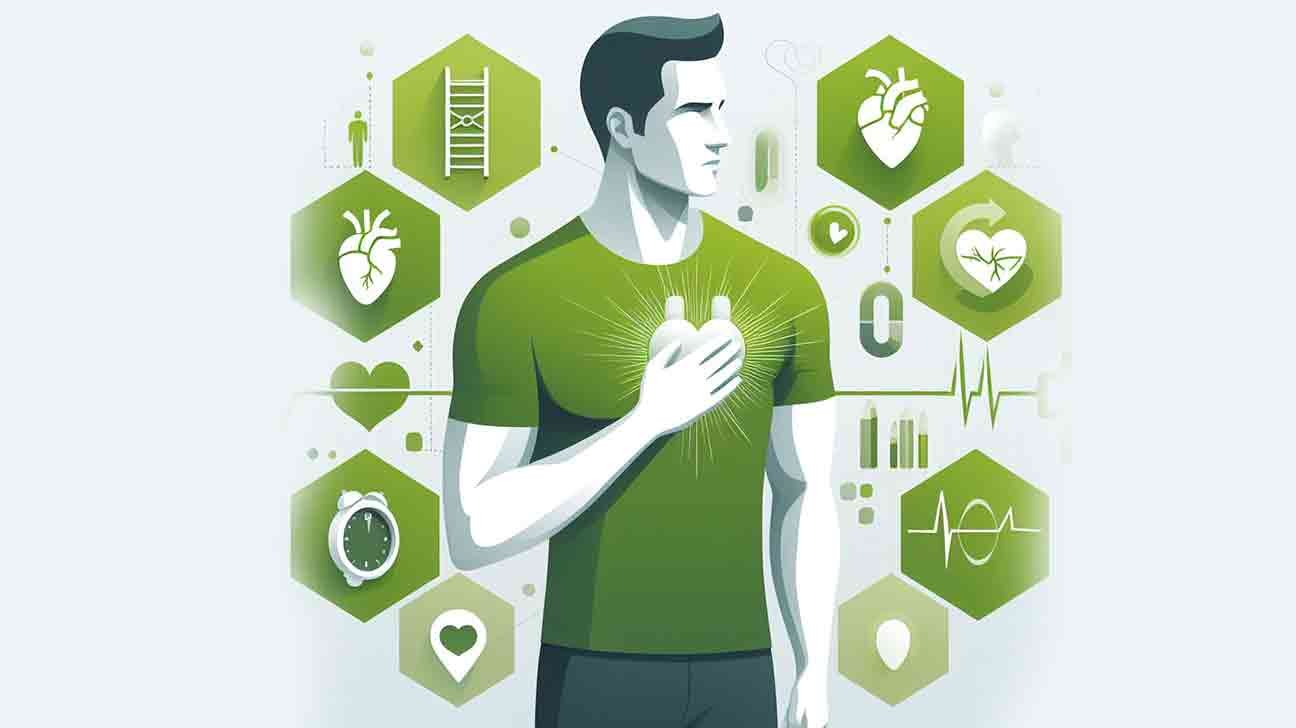Cardiovascular Sonography: An Overview
Cardiovascular sonography, also known as echocardiography, is a diagnostic imaging technique that uses ultrasound waves to create images of the heart and blood vessels. It plays a crucial role in assessing the structure and function of the cardiovascular system, aiding in the diagnosis and management of various heart conditions. Below is a comprehensive overview, including the techniques, indications, and benefits of cardiovascular sonography.
1. What is Cardiovascular Sonography?
Cardiovascular sonography is a non-invasive imaging modality that provides real-time images of the heart’s anatomy and blood flow. It utilizes high-frequency sound waves emitted by a transducer, which are then reflected off the heart’s structures and converted into images. These images can reveal important information about heart size, shape, motion, and blood flow patterns.
Types of Echocardiography:
- Transthoracic Echocardiography (TTE): The most common type, performed by placing a transducer on the chest wall.
- Transesophageal Echocardiography (TEE): Involves inserting a transducer down the esophagus for a closer view of the heart, often used when TTE results are inconclusive.
- Stress Echocardiography: Assesses heart function under stress (exercise or medication-induced) to evaluate conditions like coronary artery disease.
- Doppler Echocardiography: Measures blood flow velocities and can assess conditions like valve stenosis and regurgitation.
2. Indications for Cardiovascular Sonography
Cardiovascular sonography is indicated for a variety of clinical conditions, including but not limited to:
- Heart Disease Diagnosis: Evaluating symptoms like chest pain, shortness of breath, and palpitations.
- Assessment of Heart Function: Measuring ejection fraction and identifying heart failure.
- Valvular Heart Disease: Assessing the structure and function of heart valves, including stenosis and regurgitation.
- Congenital Heart Defects: Diagnosing structural abnormalities present from birth.
- Cardiomyopathy: Evaluating conditions that affect heart muscle, such as hypertrophic cardiomyopathy or dilated cardiomyopathy.
- Atrial and Ventricular Septal Defects: Detecting holes in the heart’s walls.
- Pericardial Disease: Assessing fluid around the heart (pericardial effusion) and inflammation (pericarditis).
- Monitoring: Tracking the progress of known heart conditions and the effectiveness of treatment.
3. Benefits of Cardiovascular Sonography
- Non-invasive: No need for incisions or injections, making it a safe procedure for patients.
- Real-time Imaging: Provides immediate feedback and allows for dynamic assessment of heart function.
- No Radiation Exposure: Unlike X-rays or CT scans, echocardiography does not involve ionizing radiation.
- Cost-effective: Generally more affordable compared to other imaging modalities like MRI or CT.
- Versatile: Can be used in various settings, including outpatient clinics, hospitals, and emergency departments.
4. The Procedure
What to Expect:
- Preparation: Patients may be asked to change into a gown. There are usually no special preparations required.
- Positioning: Patients lie on their left side to bring the heart closer to the chest wall.
- Application of Gel: A conductive gel is applied to the chest to help transmit sound waves.
- Transducer Placement: The sonographer moves the transducer over the chest to capture images from different angles.
- Image Acquisition: The procedure typically lasts 30 to 60 minutes, during which various views of the heart and blood vessels are obtained.
Post-Procedure:
- Patients can return to their normal activities immediately after the procedure.
- The images will be reviewed by a cardiologist, who will interpret the results and provide a report to the referring physician.
5. Risks and Considerations
Cardiovascular sonography is generally safe, with minimal risks. However, some considerations include:
- Discomfort: Patients may experience slight discomfort from the pressure of the transducer on the chest.
- Allergic Reactions: Rarely, some patients may have an allergic reaction to the gel used during the procedure.
- Specific Situations for TEE: TEE involves sedation and carries a slight risk of complications, such as esophageal injury.
6. Frequently Asked Questions (FAQ)
1. How does cardiovascular sonography differ from other imaging tests? Unlike CT or MRI scans, which use radiation, cardiovascular sonography uses sound waves to produce images, making it safer for repeated use.
2. How often should cardiovascular sonography be performed? The frequency depends on individual health conditions, risk factors, and physician recommendations. Regular monitoring may be necessary for patients with known heart conditions.
3. Can cardiovascular sonography detect all heart problems? While echocardiography is a valuable tool for diagnosing many heart conditions, some issues may require additional imaging or diagnostic tests for confirmation.
4. Is there any special preparation needed before the procedure? Generally, no special preparation is needed for TTE. For TEE, fasting for several hours before the test is typically required.
5. How long does it take to receive results? Preliminary results may be available immediately, but a comprehensive report is usually sent to the referring physician within a few days.
7. Conclusion
Cardiovascular sonography is an essential tool in modern medicine, providing crucial information about heart health and function. Its non-invasive nature, real-time imaging capabilities, and lack of radiation exposure make it an invaluable resource for both diagnosis and monitoring of cardiovascular conditions. Regular screenings and timely evaluations can significantly improve heart health outcomes and overall patient care. If you have concerns about your heart health, consult your healthcare provider to discuss the potential need for cardiovascular sonography.

Cardiovascular disease refers to conditions affecting the heart and blood vessels, including heart disease and stroke. It is the leading cause of death globally, accounting for approximately 17.9 million deaths annually.
This disease can result from various factors, including unhealthy diet, physical inactivity, tobacco use, and excessive alcohol consumption. Additionally, genetics, high blood pressure, and high cholesterol levels can also contribute to the development of cardiovascular disease. Understanding the risk factors and symptoms of this condition is crucial for prevention and early intervention.
By adopting a healthy lifestyle and seeking regular medical check-ups, individuals can lower their risk of cardiovascular disease and improve their overall well-being.
Cardiovascular Disease
Cardiovascular disease refers to conditions affecting the heart and blood vessels, leading to potential complications. Risk factors include high blood pressure and cholesterol levels, diabetes, and smoking. Regular exercise, a balanced diet, and stress management can help reduce the risk of developing cardiovascular disease.
Understanding Cardiovascular Disease
Cardiovascular disease, often referred to as CVD, encompasses a range of conditions that affect the heart and blood vessels. This includes heart disease, stroke, and other vascular diseases. It is a leading cause of death globally, making it crucial to understand its risk factors, prevention, and management.
Risk Factors For Cardiovascular Disease:
- High blood pressure: This increases the workload on the heart and can lead to damage over time.
- High cholesterol levels: Excess cholesterol can accumulate in the arteries, narrowing them and increasing the risk of heart disease.
- Smoking: Tobacco smoke contains chemicals that can damage the heart and blood vessels.
- Diabetes: Uncontrolled diabetes can damage blood vessels and the heart.
- Obesity: Being overweight can contribute to conditions that increase risk.
- Family history: Genetics can play a role in predisposing individuals to cardiovascular diseases.
Prevention And Management Strategies:
- Healthy diet: Consuming a diet rich in fruits, vegetables, whole grains, and lean proteins can help maintain heart health.
- Regular physical activity: Engaging in regular exercise can help control weight, reduce blood pressure, and improve overall cardiovascular health.
- Avoiding tobacco: Quitting smoking and avoiding secondhand smoke can significantly reduce the risk of cardiovascular disease.
- Managing stress: Chronic stress can contribute to heart disease, so finding healthy ways to manage stress is important.
- Regular check-ups: Monitoring blood pressure, cholesterol levels, and other risk factors can aid in early detection and prevention of cardiovascular disease.
By understanding the risk factors and implementing prevention and management strategies, individuals can take proactive steps in reducing their risk of developing cardiovascular disease. It is important to prioritize heart health through lifestyle choices and regular medical check-ups to promote overall well-being.
Atherosclerotic Cardiovascular Disease
Atherosclerotic cardiovascular disease refers to the buildup of plaque in the arteries, leading to reduced blood flow and increased risk of heart attack and stroke. It is a common form of cardiovascular disease, often caused by factors such as high cholesterol, high blood pressure, and smoking.
Understanding Atherosclerotic Cardiovascular Disease:
Atherosclerotic cardiovascular disease (ASCVD) is a condition characterized by the build-up of plaque in the arteries, leading to restricted blood flow and potential complications. Here’s a breakdown of key points regarding ASCVD:
- Risk Factors:
- High blood pressure: Increases strain on arteries, contributing to plaque formation.
- High cholesterol levels: Excessive cholesterol can deposit in arteries, forming plaques.
- Smoking: Damages artery walls, facilitating plaque accumulation.
- Diabetes: Elevated blood sugar levels can promote atherosclerosis.
- Symptoms:
- Chest pain or discomfort (angina): Result of reduced blood flow to the heart.
- Shortness of breath: Due to decreased oxygen supply to the body.
- Fatigue: Caused by the heart working harder to pump blood efficiently.
- Diagnosis:
- Blood tests: Measure cholesterol and triglyceride levels.
- Imaging tests: Such as angiography or CT scans to visualize blockages.
- Stress tests: Assess heart function during physical exertion.
- Treatment:
- Lifestyle changes: Including a heart-healthy diet and regular exercise.
- Medications: Such as statins to lower cholesterol and blood thinners.
- Procedures: Angioplasty or bypass surgery to restore blood flow in severe cases.
Preventing Atherosclerotic Cardiovascular Disease:
Preventing ASCVD involves adopting a proactive approach to reduce risk factors and promote heart health. Here are some strategies to prevent the onset of atherosclerosis:
- Maintain a healthy diet: Emphasize fruits, vegetables, whole grains, and lean proteins.
- Engage in regular physical activity: Aim for at least 150 minutes of moderate exercise per week.
- Manage stress: Practice relaxation techniques like meditation or yoga.
- Quit smoking: Seek support to overcome nicotine addiction.
- Regular health check-ups: Monitor blood pressure, cholesterol, and blood sugar levels.
By implementing these preventive measures, individuals can lower their chances of developing ASCVD and safeguard their cardiovascular health.
What Is Cardiovascular Disease
Cardiovascular disease refers to conditions affecting the heart and blood vessels. It includes heart attacks, strokes, and other heart-related issues. Lifestyle factors like smoking, poor diet, and lack of exercise can increase the risk of developing cardiovascular disease.
Understanding Cardiovascular Disease
Cardiovascular disease, also known as heart disease, encompasses a range of conditions that affect the heart and blood vessels. It is the leading cause of death globally, making it crucial to understand its nature and risk factors.
Plain Paragraph
Cardiovascular disease refers to a group of disorders that involve the heart or blood vessels, including coronary artery disease, heart failure, and stroke. These conditions can lead to serious complications and require comprehensive management.
Causes And Risk Factors
- Sedentary Lifestyle: Engaging in little to no physical activity can increase the risk of developing cardiovascular disease.
- Poor Diet: Consuming high amounts of saturated fats, trans fats, and cholesterol can contribute to the development of heart disease.
- Smoking: Tobacco use is a significant risk factor for cardiovascular disease, as it damages the heart and blood vessels.
- Hypertension: High blood pressure can strain the heart and increase the risk of heart disease and stroke.
- Diabetes: Individuals with diabetes are at a higher risk of developing cardiovascular disease due to elevated blood sugar levels.
Plain Paragraph
Understanding the causes and risk factors associated with cardiovascular disease is essential for adopting preventive measures and making informed lifestyle choices.
Symptoms And Diagnosis
- Chest Pain: A common symptom of cardiovascular disease, chest pain can indicate underlying heart problems.
- Shortness of Breath: Difficulty breathing, especially during physical activity, may signal an issue with the heart or blood vessels.
- Diagnostic Tests: Electrocardiogram (ECG), echocardiogram, and stress tests are commonly used to diagnose cardiovascular disease and assess its severity.
Plain Paragraph
Recognizing the symptoms and seeking timely medical evaluation is crucial for early detection and effective management of cardiovascular disease.
Treatment And Prevention
- Lifestyle Modifications: Implementing a healthy diet, regular exercise, and smoking cessation can significantly reduce the risk of cardiovascular disease.
- Medications: Physicians may prescribe medications to manage blood pressure, cholesterol levels, and other risk factors.
- Surgical Interventions: In some cases, procedures such as angioplasty or bypass surgery may be necessary to treat advanced cardiovascular disease.
Plain Paragraph
By prioritizing preventive measures and adhering to prescribed treatments, individuals can mitigate the impact of cardiovascular disease and improve their overall heart health.
The multifaceted nature of cardiovascular disease underscores the importance of proactive management and preventive strategies to safeguard heart health and reduce the burden of heart-related complications.

Cardiovascular Disease Symptoms
Cardiovascular disease symptoms may include chest pain, shortness of breath, fatigue, and dizziness. Recognizing these signs is crucial for early intervention and prevention of heart-related complications. Seeking prompt medical attention is essential for managing cardiovascular health.
Cardiovascular disease refers to conditions that involve narrowed or blocked blood vessels, which can lead to serious health complications. Recognizing the symptoms of cardiovascular disease is crucial for early detection and treatment. Here are the common signs and symptoms to watch out for:
- Chest Pain or Discomfort: This may feel like pressure, tightness, or a squeezing sensation in the chest. It can also spread to the arms, neck, or back.
- Shortness of Breath: Feeling breathless during normal activities or at rest could be a sign of underlying heart problems.
- Dizziness or Lightheadedness: Unexplained dizziness or feeling lightheaded can be indicative of poor blood circulation.
- Fatigue: Persistent fatigue or weakness, especially with minimal exertion, may signal an issue with the heart’s pumping ability.
- Swelling: Swelling in the legs, ankles, feet, or abdomen could be a result of fluid retention due to heart failure.
- Irregular Heartbeat: Palpitations, rapid heart rate, or irregular heartbeat patterns may indicate an underlying heart condition.
- Nausea or Lack of Appetite: Unexplained nausea or loss of appetite, especially when accompanied by other symptoms, should not be ignored.
- Cold Sweats: Sudden cold sweats, particularly if unrelated to physical exertion or hot weather, may be a warning sign of heart problems.
Recognizing these symptoms and seeking prompt medical attention is vital in managing cardiovascular disease and preventing further complications.
The Most Important Step For Preventing Cardiovascular Disease Is To Live A Healthy Lifestyle.
Living a healthy lifestyle is crucial in preventing cardiovascular disease. Eating a balanced diet, staying physically active, and avoiding smoking are essential steps to keep your heart healthy. By making these choices, you can significantly reduce the risk of developing heart-related issues.
Living A Healthy Lifestyle To Prevent Cardiovascular Disease
Maintaining a healthy lifestyle is crucial in preventing cardiovascular disease. By incorporating simple yet effective habits into your daily routine, you can significantly reduce your risk of heart-related issues. Here are some key steps you can take:
- Regular Exercise: Engaging in physical activity for at least 30 minutes a day can improve heart health and lower the risk of developing cardiovascular disease.
- Balanced Diet: Consuming a diet rich in fruits, vegetables, whole grains, lean proteins, and healthy fats can help keep your heart healthy.
- Weight Management: Maintaining a healthy weight through a combination of proper diet and exercise can reduce strain on the heart.
- Avoiding Smoking: Quitting smoking or avoiding exposure to secondhand smoke can greatly decrease the risk of heart disease.
- Limiting Alcohol Intake: Moderation is key when it comes to alcohol consumption, as excessive drinking can contribute to heart issues.
- Managing Stress: Finding healthy ways to cope with stress, such as meditation or exercise, can benefit both your mental and heart health.
By making these lifestyle changes, you are taking proactive steps towards safeguarding your cardiovascular health and promoting overall well-being. Remember, small adjustments can lead to significant improvements in the long run.
How Do Disease Prevention Programs Try To Reduce Cardiovascular Disease?
Disease prevention programs combat cardiovascular disease through promoting healthy lifestyles, managing risk factors, and providing education on early detection and treatment options. These initiatives focus on reducing smoking, encouraging physical activity, and promoting a balanced diet to lower the incidence of heart-related issues.
Disease Prevention Programs And Cardiovascular Disease Reduction
Cardiovascular disease is a leading cause of mortality worldwide, prompting the development of various disease prevention programs aimed at reducing its prevalence and impact. These programs employ multifaceted approaches to address risk factors, promote healthy lifestyles, and enhance public awareness.
Let’s delve into how these disease prevention programs strive to mitigate the burden of cardiovascular disease.
Lifestyle Modification Initiatives
- Encouraging Physical Activity: Promoting regular exercise and physical activity to improve cardiovascular health and reduce the risk of heart disease.
- Dietary Guidelines: Providing dietary recommendations that emphasize the consumption of fruits, vegetables, whole grains, and lean proteins to support heart health.
Risk Factor Management Strategies
- Blood Pressure Control: Implementing measures to monitor and manage high blood pressure through regular screenings and lifestyle interventions.
- Cholesterol Management: Educating individuals on the importance of cholesterol control through dietary modifications and medication adherence.
- Smoking Cessation Programs: Offering smoking cessation support and resources to reduce the prevalence of smoking-related cardiovascular complications.
Public Awareness And Education Campaigns
- Health Promotion Initiatives: Conducting educational campaigns to raise awareness about the impact of cardiovascular disease and the significance of preventive measures.
- Community Outreach Programs: Engaging with local communities to disseminate information on heart-healthy practices and risk factor management.
Collaborative Healthcare Interventions
- Interdisciplinary Care Coordination: Fostering collaboration among healthcare professionals to deliver comprehensive care and support for individuals at risk of or affected by cardiovascular disease.
- Patient Empowerment: Empowering patients through education, self-management tools, and access to resources for proactive cardiovascular health management.
These disease prevention programs strive to holistically address the multifactorial nature of cardiovascular disease, aiming to reduce its prevalence and improve overall heart health across diverse populations. By implementing targeted interventions and fostering a culture of proactive wellness, these initiatives play a pivotal role in mitigating the impact of cardiovascular disease on individuals and communities.
Hypertensive Cardiovascular Disease
Hypertensive cardiovascular disease refers to a condition where high blood pressure affects the heart and blood vessels, leading to various cardiovascular issues. This includes heart failure, coronary artery disease, and stroke. Management involves controlling blood pressure through lifestyle changes and medication to reduce the risk of complications.
Understanding Hypertensive Cardiovascular Disease
Hypertensive cardiovascular disease is a serious condition that results from high blood pressure affecting the heart and blood vessels. Here are some key points to help you grasp the intricacies of this ailment:
- Hypertension, or high blood pressure, is a common risk factor for developing cardiovascular disease.
- Elevated blood pressure puts strain on the heart, leading to complications over time.
- Hypertensive cardiovascular disease encompasses various conditions, including heart failure, coronary artery disease, and stroke.
- The heart has to work harder to pump blood efficiently, which can weaken the heart muscle.
- Uncontrolled hypertension can damage arteries, leading to atherosclerosis and increasing the risk of heart attacks and strokes.
- The buildup of plaque in the arteries restricts blood flow, further straining the heart.
Managing Hypertensive Cardiovascular Disease
Proper management of is crucial for preventing complications and improving overall heart health. Here are some essential steps to help control this condition:
- Lifestyle modifications, such as following a heart-healthy diet and engaging in regular exercise, play a significant role in managing hypertension.
- Consuming a diet low in sodium and saturated fats can help reduce blood pressure levels.
- Medications prescribed by healthcare providers, such as antihypertensive drugs, are often necessary to control high blood pressure effectively.
- Regular monitoring of blood pressure levels is essential to ensure that treatment is working optimally.
- Stress management techniques, such as meditation and relaxation exercises, can help lower blood pressure and reduce the risk of cardiovascular complications.
- Adopting healthy habits, like quitting smoking and limiting alcohol consumption, can further support heart health.
Preventing Hypertensive Cardiovascular Disease
Prevention is key when it comes to hypertensive cardiovascular disease. By implementing the following strategies, you can reduce the risk of developing this condition:
- Regular health screenings to monitor blood pressure levels and detect hypertension early on.
- Maintaining a healthy weight and staying physically active can help prevent high blood pressure.
- Limiting the intake of processed foods and prioritizing whole, nutrient-dense foods in your diet can support heart health.
- Avoiding excessive salt intake and consuming a variety of fruits and vegetables can help lower blood pressure.
- Educating yourself about the risk factors associated with hypertension and cardiovascular disease can empower you to make informed lifestyle choices.
- Seeking guidance from healthcare professionals for personalized recommendations on managing blood pressure effectively.

Cardiovascular Disease Definition
Cardiovascular disease refers to conditions that affect the heart and blood vessels, leading to various complications. It is a leading cause of death globally, with risk factors including high blood pressure, high cholesterol, smoking, and lack of physical activity. Early detection and lifestyle changes are crucial in preventing cardiovascular disease.
Cardiovascular disease (CVD) is an umbrella term used to refer to a group of conditions that affect the heart and blood vessels. It is a serious health concern that affects millions of people worldwide and is the leading cause of death globally.
Types Of Cardiovascular Disease
There are several types of CVD, including:
- Coronary artery disease: This occurs when the arteries that supply blood to the heart become narrow or blocked, leading to chest pain or a heart attack.
- Heart failure: This happens when the heart cannot pump enough blood to meet the body’s needs, leading to fatigue and shortness of breath.
- Stroke: This occurs when the blood supply to the brain is disrupted, leading to brain damage and potentially death.
- Aortic aneurysm: This happens when the wall of the aorta weakens and bulges, which can rupture and cause life-threatening bleeding.
Causes Of Cardiovascular Disease
The following factors can increase the risk of developing CVD:
- High blood pressure
- High cholesterol
- Smoking
- Diabetes
- Obesity
- Lack of physical activity
- Family history of CVD
Symptoms Of Cardiovascular Disease
The symptoms of CVD can vary depending on the type of condition. However, some common symptoms include:
- Chest pain or discomfort
- Shortness of breath
- Fatigue
- Dizziness or lightheadedness
- Swelling in the legs, ankles, or feet
- Nausea or vomiting
Prevention And Treatment Of Cardiovascular Disease
Some ways to prevent CVD include:
- Eating a healthy diet
- Regular exercise
- Maintaining a healthy weight
- Avoiding tobacco products
- Managing stress
Treatment for CVD may include medication, lifestyle changes, and in some cases, surgery.
Understanding the definition, types, causes, symptoms, prevention, and treatment of CVD is essential in maintaining a healthy heart and preventing the onset of this deadly disease.
Symptoms Of Cardiovascular Disease
Cardiovascular disease has several symptoms that can vary from person to person. Some of the common symptoms include chest pain, shortness of breath, irregular heartbeat, fatigue, dizziness, and swelling in the ankles, feet, or legs. It is important to seek medical attention if you experience any of these symptoms.
Cardiovascular disease may manifest through various symptoms, indicating potential heart or blood vessel issues. Recognizing these signs can lead to early diagnosis and prompt medical intervention. Below are the common symptoms associated with cardiovascular disease:
- Chest Pain: Individuals may experience chest discomfort, pressure, or tightness, often signaling heart problems.
- Shortness of Breath: Difficulty breathing, especially during physical activity or at rest, can be a symptom of cardiovascular disease.
- Fatigue: Feeling unusually tired or exhausted, even with minimal exertion, could be a sign of an underlying heart condition.
- Dizziness or Lightheadedness: Episodes of dizziness or feeling faint may indicate poor blood circulation or heart irregularities.
- Swelling: Swelling in the legs, ankles, feet, or abdomen can be a symptom of heart failure or other cardiovascular issues.
- Irregular Heartbeat: Palpitations, fluttering, or irregular heart rhythms may suggest an underlying cardiovascular problem.
- Nausea or Lack of Appetite: Persistent nausea, indigestion, or a decreased appetite without any apparent cause could be linked to cardiovascular disease.
Recognizing these symptoms and seeking medical attention promptly is crucial in managing and treating cardiovascular disease effectively. If you experience any of these signs, consult with a healthcare provider for a comprehensive evaluation and appropriate management.
Arteriosclerotic Cardiovascular Disease
Arteriosclerotic cardiovascular disease, a type of cardiovascular disease, involves the hardening and narrowing of arteries due to plaque buildup. This condition can lead to serious complications such as heart attacks and strokes. Early detection and lifestyle modifications are crucial in managing this disease.
Understanding Arteriosclerotic Cardiovascular Disease
Arteriosclerotic cardiovascular disease, also known as atherosclerosis, is a condition characterized by the narrowing and hardening of the arteries due to the accumulation of plaque. This condition can lead to serious health complications, including heart attack and stroke. Understanding the causes, symptoms, and risk factors associated with is crucial for prevention and management.
Causes Of Arteriosclerotic Cardiovascular Disease
- High cholesterol levels: Excessive levels of low-density lipoprotein (LDL) cholesterol can lead to the build-up of plaque in the arteries, contributing to arteriosclerosis.
- Hypertension: Uncontrolled high blood pressure can damage the arterial walls, promoting the development of atherosclerosis.
- Smoking: Tobacco use can damage the inner lining of the arteries, increasing the risk of plaque formation.
- Diabetes: Poorly managed diabetes can accelerate the progression of arteriosclerosis due to elevated blood sugar levels.
Symptoms Of Arteriosclerotic Cardiovascular Disease
- Chest pain or angina: Discomfort, pressure, or tightness in the chest, often triggered by physical activity or stress.
- Shortness of breath: Difficulty breathing, especially during exertion or when lying down.
- Numbness or weakness: Reduced blood flow to the extremities can cause numbness or weakness in the legs, arms, or hands.
- Erectile dysfunction: In men, arteriosclerosis may lead to impotence due to impaired blood flow to the reproductive organs.
Risk Factors For Arteriosclerotic Cardiovascular Disease
- Age: The risk of developing atherosclerosis increases with age, particularly in individuals over 65.
- Family history: Genetic predisposition to high cholesterol or hypertension can elevate the risk of arteriosclerotic cardiovascular disease.
- Obesity: Excess body weight can contribute to elevated cholesterol levels and hypertension, accelerating the progression of atherosclerosis.
- Sedentary lifestyle: Lack of physical activity can lead to weight gain and worsen cholesterol levels, increasing the risk of arteriosclerosis.
Managing Arteriosclerotic Cardiovascular Disease
- Lifestyle modifications: Adopting a heart-healthy diet, engaging in regular physical activity, quitting smoking, and managing stress can help prevent and manage arteriosclerosis.
- Medications: Statins, blood pressure-lowering drugs, and antiplatelet medications may be prescribed to control cholesterol levels, blood pressure, and reduce the risk of blood clots.
- Medical procedures: In severe cases, angioplasty, stent placement, or bypass surgery may be necessary to restore blood flow and reduce the risk of complications.
Understanding the underlying causes, recognizing the symptoms, and addressing modifiable risk factors are essential in the management of arteriosclerotic cardiovascular disease. By implementing preventive measures and seeking appropriate medical care, individuals can reduce the impact of this condition on their overall health and well-being.
How Do Disease Prevention Programs Try To Reduce Cardiovascular Disease?
Disease prevention programs aim to reduce cardiovascular disease by promoting healthy lifestyle choices, such as regular exercise, balanced diet, and smoking cessation. They also focus on early detection and management of risk factors like high blood pressure and cholesterol levels to prevent the onset of cardiovascular disease.
Disease Prevention Programs For Cardiovascular Disease
Cardiovascular disease is a leading cause of mortality worldwide, prompting the implementation of disease prevention programs aimed at reducing its prevalence. These initiatives target various risk factors and promote healthy lifestyle choices to mitigate the impact of cardiovascular disease.
Lifestyle Modification:
- Regular Physical Activity: Engaging in regular physical activity, such as brisk walking, swimming, or cycling, helps in maintaining a healthy weight and improving cardiovascular health.
- Balanced Diet: Consuming a diet rich in fruits, vegetables, whole grains, and lean proteins while limiting the intake of saturated fats, trans fats, and sodium is crucial for preventing cardiovascular disease.
- Smoking Cessation: Encouraging individuals to quit smoking and providing resources for smoking cessation support is an integral aspect of disease prevention programs.
Awareness Campaigns And Education:
- Public Awareness Campaigns: Educating the public about the risk factors associated with cardiovascular disease through awareness campaigns and community events is essential for promoting preventive measures.
- Health Education Programs: Conducting educational programs in schools, workplaces, and communities to raise awareness about the importance of maintaining a healthy lifestyle and managing risk factors for cardiovascular disease.
Screening And Early Detection:
- Regular Health Check-ups: Encouraging individuals to undergo regular health check-ups, including blood pressure measurements, cholesterol screenings, and diabetes screenings, to facilitate early detection and intervention.
- Risk Assessment Tools: Implementing risk assessment tools to identify individuals at high risk of cardiovascular disease and providing targeted interventions and lifestyle modifications based on the assessment results.
Access To Healthcare Services:
- Affordable Healthcare Services: Ensuring access to affordable healthcare services, including preventive screenings, medications, and cardiac rehabilitation programs, plays a crucial role in reducing the burden of cardiovascular disease.
- Community Health Centers: Establishing community health centers and outreach programs to provide healthcare services, promote preventive care, and address the needs of underserved populations.
Disease prevention programs employ a multifaceted approach encompassing lifestyle modifications, awareness campaigns, screening, and access to healthcare services to reduce the prevalence of cardiovascular disease and improve overall cardiovascular health. By addressing risk factors and promoting healthy behaviors, these initiatives aim to mitigate the impact of cardiovascular disease and enhance public well-being.

Which Of These Is A Controllable Risk Factor Of Cardiovascular Disease Or Heart Attacks?
Controllable risk factors for cardiovascular disease or heart attacks include smoking, high blood pressure, high cholesterol, obesity, and physical inactivity. By managing these factors, individuals can reduce their risk and improve their heart health.
Controllable Risk Factors Of Cardiovascular Disease
Cardiovascular disease is a leading cause of mortality worldwide, with several risk factors playing a significant role in its development. Among these risk factors, some are controllable through lifestyle changes and medical interventions. Understanding and managing these controllable risk factors can help reduce the risk of cardiovascular disease and heart attacks.
Controllable Risk Factors:
- High Blood Pressure: Elevated blood pressure can strain the heart and blood vessels, increasing the risk of cardiovascular disease.
- High Cholesterol Levels: Excess cholesterol can accumulate in the arteries, leading to atherosclerosis and increasing the risk of heart attacks.
- Obesity: Being overweight or obese can contribute to various cardiovascular risk factors, including high blood pressure and diabetes.
- Physical Inactivity: Lack of regular exercise can lead to weight gain, high blood pressure, and other risk factors for heart disease.
- Smoking: Tobacco use is a major risk factor for cardiovascular disease, as it can damage blood vessels and increase the risk of blood clots.
By addressing these controllable risk factors through healthy lifestyle choices, regular medical check-ups, and appropriate treatments, individuals can significantly reduce their risk of developing cardiovascular disease and experiencing heart attacks. It is essential to prioritize heart health by making informed decisions that promote overall well-being and longevity.
What Causes Cardiovascular Disease
Cardiovascular disease is primarily caused by factors such as high blood pressure, high cholesterol levels, smoking, unhealthy diet, lack of physical activity, and obesity. These lifestyle choices and genetic predispositions can lead to the development of cardiovascular issues over time.
Cardiovascular Disease: What Causes It?
Cardiovascular disease, also known as heart disease, is the leading cause of death worldwide. It is a condition that affects the heart and blood vessels and can lead to various health problems such as heart attacks, strokes, and heart failure.
But? Let’s take a closer look.
Risk Factors For Cardiovascular Disease
There are several risk factors associated with cardiovascular disease. These include:
- High blood pressure: When the blood pressure is consistently high, it puts a strain on the heart and blood vessels, making them more susceptible to damage.
- High cholesterol: High levels of cholesterol in the blood can contribute to the buildup of plaque in the arteries, which can lead to a heart attack or stroke.
- Smoking: Smoking damages the blood vessels, making them more prone to blockages and narrowing.
- Diabetes: People with diabetes are at a higher risk of developing cardiovascular disease as high blood sugar levels can damage blood vessels and nerves.
- Obesity: Being overweight or obese can increase the risk of developing high blood pressure, high cholesterol, and diabetes, all of which are risk factors for cardiovascular disease.
Lifestyle Factors
In addition to the above risk factors, certain lifestyle factors can also contribute to the development of cardiovascular disease. These include:
- Lack of physical activity: Regular physical activity is essential for maintaining a healthy heart and blood vessels.
- Unhealthy diet: A diet high in saturated and trans fats, salt, and sugar can contribute to the development of high blood pressure, high cholesterol, and obesity.
- Stress: Chronic stress can lead to the release of hormones that can damage blood vessels and increase the risk of cardiovascular disease.
Cardiovascular disease is caused by a combination of risk factors and lifestyle factors. Understanding these causes and taking steps to address them can help reduce the risk of developing this serious health condition.
Frequently Asked Questions
Can You Live A Normal Life With Cardiovascular Disease?
Yes, it is possible to live a normal life with cardiovascular disease, but it requires proper management and lifestyle changes. This includes following a heart-healthy diet, getting regular exercise, taking medication as prescribed, quitting smoking, and managing stress levels. It is important to work closely with a healthcare provider to create an individualized plan for managing the disease.
How To Reverse Cardiovascular Disease?
To reverse cardiovascular disease, focus on a healthy diet, regular exercise, stress management, and quitting smoking. Consult with a healthcare provider for personalized treatment plans.
What Are 3 Signs And Symptoms Of Cardiovascular Disease?
Common signs and symptoms of cardiovascular disease include chest pain, shortness of breath, and heart palpitations. These indicate potential issues with the heart and blood vessels. Seek medical attention if you experience any of these symptoms.
What Is The Main Cause Of Cardiovascular Disease?
The main cause of cardiovascular disease is the build-up of plaque in the arteries, leading to blockages and restricted blood flow.
Conclusion
Understanding cardiovascular disease is crucial for maintaining heart health. By adopting a healthy lifestyle and seeking regular medical check-ups, you can reduce your risk. Stay active, eat well, and listen to your body to prevent heart issues. Remember, your heart matters, so take care of it.



